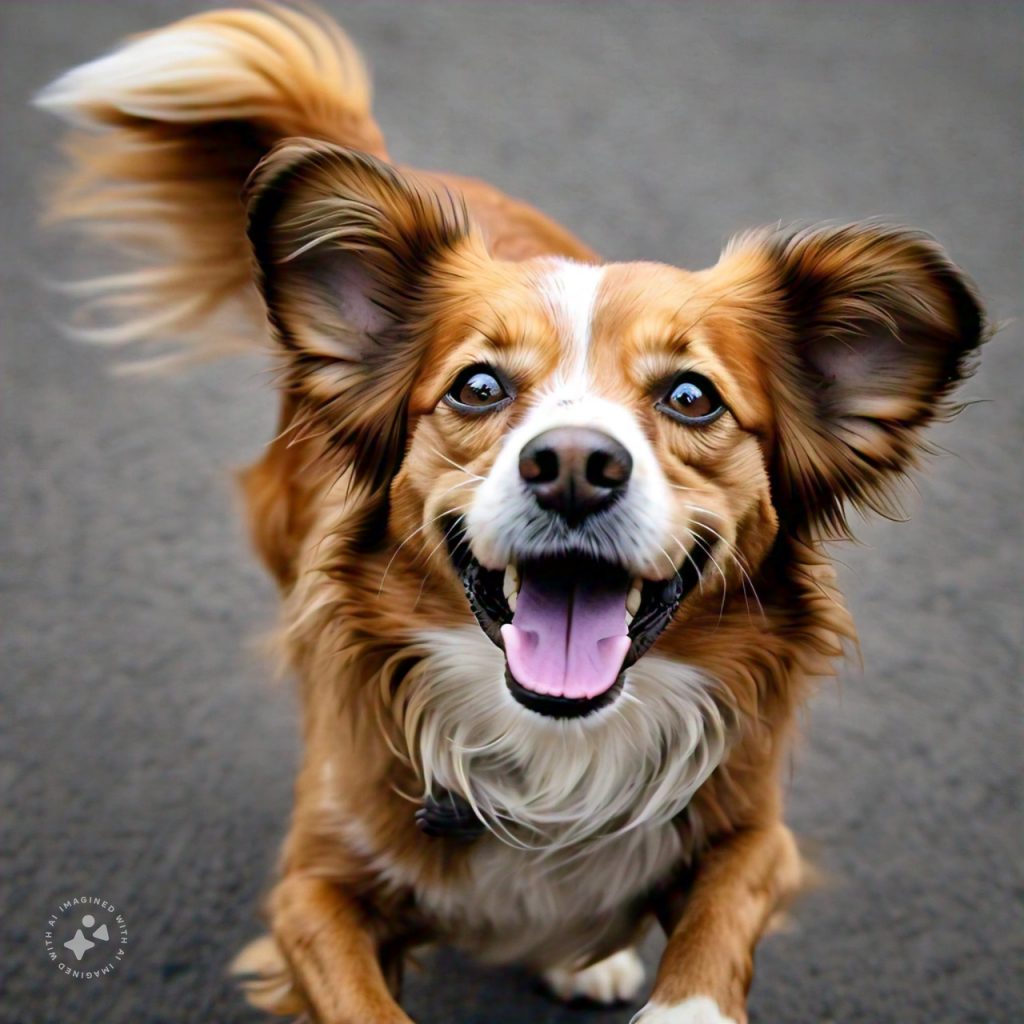Dogs are known for their expressive tails, which seem to wag at every moment of joy, excitement, or interaction. But have you ever wondered why dogs wag their tails? Tail wagging is more than a simple display of happiness; it’s a sophisticated form of communication. By understanding the nuances of this behavior, you can better interpret your dog’s emotions and intentions.
This article provides an in-depth exploration of tail wagging, its meanings, and the science behind this iconic canine behavior.
The Purpose of Tail Wagging
A dog’s tail serves multiple functions:
- Communication: Dogs use their tails to convey emotions and intentions to humans and other animals.
- Balance: The tail helps dogs maintain balance, especially during running, climbing, or making sharp turns.
- Scent Marking: Glands near the base of a dog’s tail release scents, and wagging can help disperse these signals.
While communication is the most noticeable purpose, tail wagging also serves as a physical extension of a dog’s mood and social interactions.
What Does Tail Wagging Mean?
Contrary to popular belief, a wagging tail doesn’t always mean a happy dog. The position, speed, and direction of the wag all provide important clues about what your dog is feeling.
1. Tail Position
The position of a dog’s tail indicates its emotional state.
- High Tail: Confidence or alertness. Dogs with raised tails are often feeling assertive or curious.
- Neutral Tail (Horizontal): A relaxed or calm dog.
- Low Tail: Submission, fear, or uncertainty. A tail tucked between the legs indicates extreme fear or anxiety.
2. Wagging Speed
The speed of the wag reveals the intensity of a dog’s emotions.
- Fast Wagging: Excitement or happiness. This often occurs when greeting a familiar person or pet.
- Slow Wagging: Hesitation or indecision. Slow wags may signal a dog is assessing a situation.
3. Wagging Direction
Research suggests that the direction of a tail wag can indicate whether the dog feels positive or negative emotions:
- Right-Sided Wagging: Positive feelings, such as happiness or enthusiasm.
- Left-Sided Wagging: Negative feelings, such as anxiety or fear.
The Science Behind Tail Wagging
Tail wagging is controlled by the caudal spinal cord, a bundle of nerves at the base of the spine. The behavior is involuntary and linked to the dog’s emotional state, regulated by the brain’s limbic system.
Studies have shown that a dog’s tail wag can influence social interactions:
- Dogs interpret each other’s tail movements to gauge mood and intentions.
- Humans subconsciously respond to tail wagging when interacting with dogs, often associating it with friendliness.
Common Situations and Their Tail Wagging Interpretations
1. Greeting You
- Behavior: Fast, broad tail wags accompanied by a wiggling body.
- Meaning: Excitement and affection.
2. Meeting New Dogs
- Behavior: High tail with rapid wagging.
- Meaning: Interest and confidence. However, watch for other body language to determine if the interaction is friendly.
3. During Playtime
- Behavior: Loose, wide tail wagging with a playful posture.
- Meaning: Joy and readiness to engage.
4. When Nervous or Afraid
- Behavior: Slow or minimal wagging with a low tail.
- Meaning: Fear or submission. Look for additional signs of stress, such as panting or avoiding eye contact.
5. Around Strangers
- Behavior: Tail wagging in a neutral position, often slow.
- Meaning: Caution or curiosity.
Do All Dogs Wag Their Tails?
While most dogs wag their tails, some breeds and individual dogs exhibit variations:
- Tail-less Breeds: Dogs like Bulldogs or Australian Shepherds, born with short or no tails, use other body language to communicate.
- Docked Tails: Breeds with docked tails, such as Dobermans, still wag the remaining portion of their tail.
- Individual Differences: Some dogs are naturally more reserved and may not wag their tails as frequently.
Tail Wagging in Puppies
Puppies begin wagging their tails at around 3-4 weeks of age as they start to interact with their littermates. This behavior evolves as a key social skill, allowing them to communicate playfulness, submission, and emotional states.
Cultural and Breed Differences in Tail Wagging
1. Breed-Specific Tails
Different breeds have distinct tail shapes and wagging styles:
- Curly Tails (e.g., Pugs, Shiba Inus): Wagging may be less pronounced but is still expressive.
- Bushy Tails (e.g., Huskies, Collies): Their thick fur can make subtle movements harder to notice.
2. Communication Challenges with Humans
Humans sometimes misinterpret tail wagging because they rely heavily on this signal. However, dogs use their entire body—ears, eyes, posture—to communicate. Tail wagging should always be interpreted within the broader context of body language.
Misconceptions About Tail Wagging
- “A Wagging Tail Means a Happy Dog”: Not always true. A wagging tail can indicate fear, submission, or even aggression.
- “Tail Wagging Stops When a Dog is Angry”: Aggressive dogs often wag their tails stiffly and high, signaling dominance or irritation.
What to Watch For: Tail Wagging and Aggression
Aggression accompanied by tail wagging often looks different:
- The tail is held high and moves stiffly.
- The rest of the body is tense, with a fixed stare or growling.
Understanding these signs can help prevent dangerous interactions.
How Humans Can Respond to Tail Wagging
To better interact with dogs:
- Observe the full body language, not just the tail.
- Approach cautiously if the tail position indicates fear or submission.
- Reward positive interactions when tail wagging is associated with calm, friendly behavior.
Conclusion
Dogs wag their tails to communicate a range of emotions, from joy and excitement to fear and caution. By paying attention to the position, speed, and direction of a wag, along with other body language cues, you can gain deeper insights into your dog’s emotional state and intentions.
Understanding why dogs wag their tails not only enhances the bond between you and your pet but also helps ensure safer, more fulfilling interactions with all canines.

